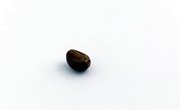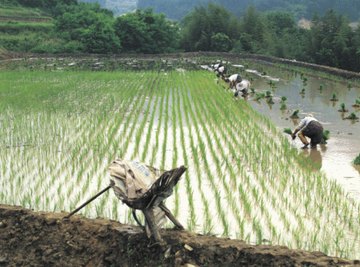
The rice plant (Oryza species) is one of the most important grain crops in the world and has been cultivated since ancient times. Potentially half of the world's population consumes rice as their main source of food, according to Purdue University. Rice plants are similar in growth habit and anatomy to other grasses and grains such as oats and wheat except that they grow in standing water or in very wet soil. They are perennial and will continue to grow as long as they don't freeze but are usually treated as an annual for food production.
Roots
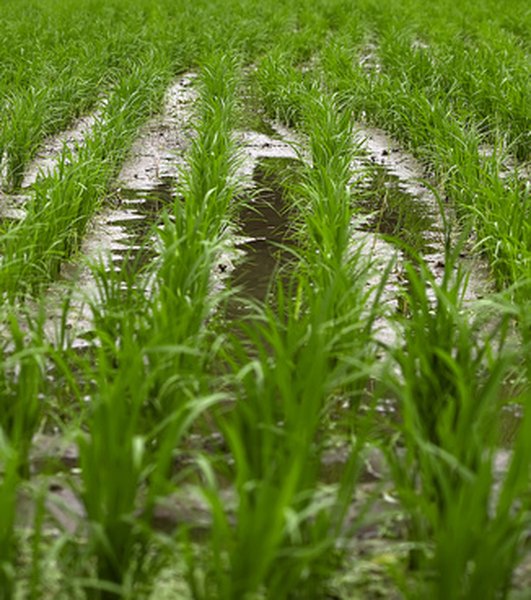
Rice plants have a fibrous roots system comprised of a mass of hair-like roots that anchor it into the muddy soil that is usually flooded with 4 to 8 inches of water. These sprout from nodes along the stem both below ground and above the surface. Fine roots absorb water and nutrients from the surrounding soil and water.
Stem

The hollow reed-like stem of the rice plant is its main structure and can be 20 inches to 6 feet tall depending on the variety. Stems resemble straws and have nodes closer together at the base and farther apart from each other toward the top. Each plant has a central stem called a primary tiller. As many as 50, but usually less than a dozen secondary tillers sprout from the lowest nodes on the primary tiller. This forms a dense clump. The plant spreads as new tillers grow from the basal nodes of the older ones. A single seed will typically develop six or seven tillers in one season.
Leaves
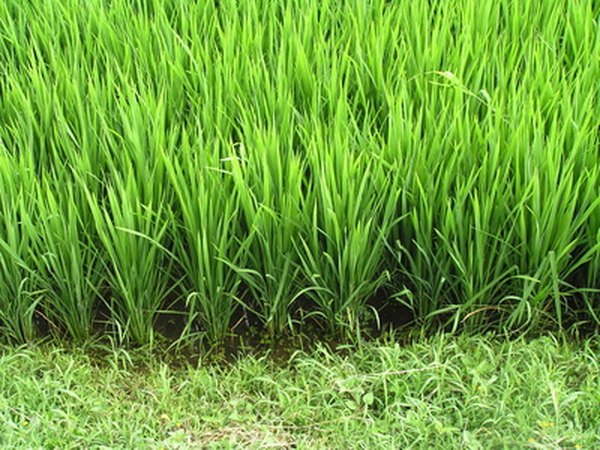
The leaves of the rice plant sprout from the nodes along the stem. They are long and ribbon-like with pronounced veins, which is typical of grasses. The bottom portion of the leaf, called the sheath, clings to the stem. The sheath protects the undeveloped buds between the leaf and the stem. The primary function of leaves is to produce food for the plant by turning sunlight, water and carbon dioxide in to simple sugars that the plant can use.
Flowers

The flowers on the rice plant sprout from the top of the tillers in clusters called panicles, or multi-branched flower stalks. Each branch has several smaller branches called spikelets, each with one flower. One panicle is usually about 4 to 10 inches long and can contain 75 to 150 or even more spikelets depending on the variety. The panicles are held either arching at an angle or nodding rather than upright like other grasses. The flowers are pollinated by the wind.
Seeds
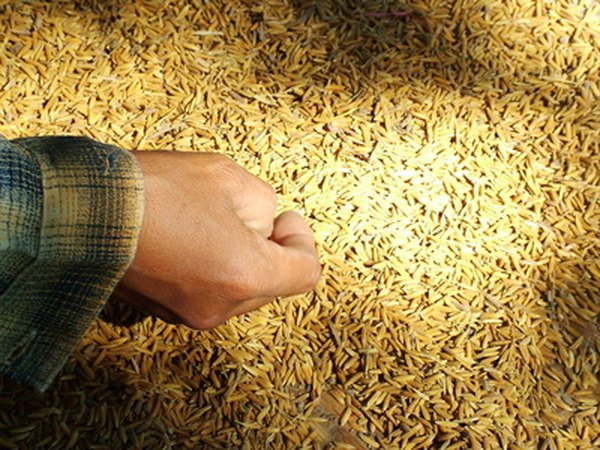
The seeds of the rice plant are the grain for which the plant is cultivated. They take about 35 days to ripen once the flowers have been pollinated. Once ripe, the seeds are harvested and dried. Like most grains, the seeds have to be threshed to remove the hulls. In modern western cultures this is done mechanically. In poorer countries this is done by swathing or bundling the stalks together and beating them in troughs manually.
References
Photo Credits
Jupiterimages/Photos.com/Getty Images
